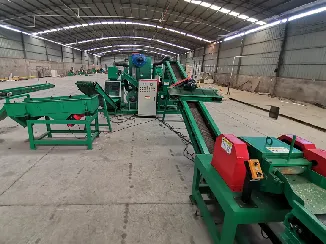

Nov . 21, 2024 08:46 Back to list
What is Shreddable Steel Scrap?
Shreddable steel scrap refers to a specific category of scrap metal that is suitable for recycling through shredding processes. This type of steel scrap is characterized by its ability to be easily broken down into smaller pieces, making it convenient for further processing and recycling in steel mills or foundries. Understanding the properties, importance, and recycling processes associated with shreddable steel scrap can provide insights into the broader implications of metal recycling in environmental sustainability and industrial practices.
Properties of Shreddable Steel Scrap
Shreddable steel scrap generally consists of various forms of steel, including automotive parts, appliances, construction materials, and industrial equipment. The defining characteristic of shreddable scrap is its manageable size and composition, allowing it to be fed into shredding machines without causing operational difficulties. Shreddable scrap typically has a high ferrous content, indicating it is primarily composed of iron and iron alloys.
The physical characteristics of shreddable steel scrap can vary widely. It often includes unprocessed materials that might be covered in rust or paint, and it may also contain non-metal contaminants. The diversity in the type of steel and the presence of impurities make it essential for processors to accurately sort and classify the material before recycling.
Importance of Shreddable Steel Scrap
The recycling of shreddable steel scrap holds significant value in today's manufacturing and environmental landscape. Steel is one of the most recycled materials globally, and the recycling process reduces the demand for new raw materials, conserves energy, and minimizes greenhouse gas emissions. Recycling scrap steel prevents the need to extract iron ore, which is resource-intensive and environmentally damaging.

Moreover, shreddable steel scrap plays a crucial role in the circular economy. By transforming waste into reusable resources, industries can reduce their ecological footprint. The recycling of shreddable steel contributes to a sustainable future, as it allows manufacturers to produce new steel products while using less energy and generating fewer emissions compared to producing steel from virgin ores.
The Recycling Process of Shreddable Steel Scrap
The recycling process for shreddable steel scrap begins with collection and transportation to processing facilities. At these facilities, industrial shredders break the collected scrap into smaller pieces. This shredding process ensures that the material can be efficiently processed and separated into its component parts.
Following shredding, the material typically undergoes further sorting and separation to remove non-ferrous contaminants and other impurities. Techniques such as magnetic separation are commonly employed to extract iron and steel from mixed scrap metals. The separated shreddable steel scrap is then processed into smaller, uniform pieces that can be easily melted down in electric arc furnaces or induction furnaces for production into new steel products.
Conclusion
In conclusion, shreddable steel scrap plays a vital role in recycling and sustainability efforts. By providing a reliable and efficient input for steel manufacturing, shreddable scrap helps conserve natural resources, reduce energy consumption, and minimize environmental impact. As industries continue to seek sustainable practices, the importance of recycling shreddable steel scrap will only grow, reinforcing its position as a key component of the modern circular economy. Understanding its properties, processes, and advantages not only highlights the value of metal recycling but also emphasizes the need for responsible material management in our industrial practices.
Latest news
Troubleshooting Common Eddy Separator Problems
NewsJul.04,2025
The Role of Metal Recycling Plants in Circular Economy
NewsJul.04,2025
The Impact of Recycling Line Pickers on Waste Management Costs
NewsJul.04,2025
Safety Features Every Metal Shredder Should Have
NewsJul.04,2025
How Industrial Shredders Improve Waste Management Systems
NewsJul.04,2025
How Cable Granulators Contribute to Sustainable Recycling
NewsJul.04,2025